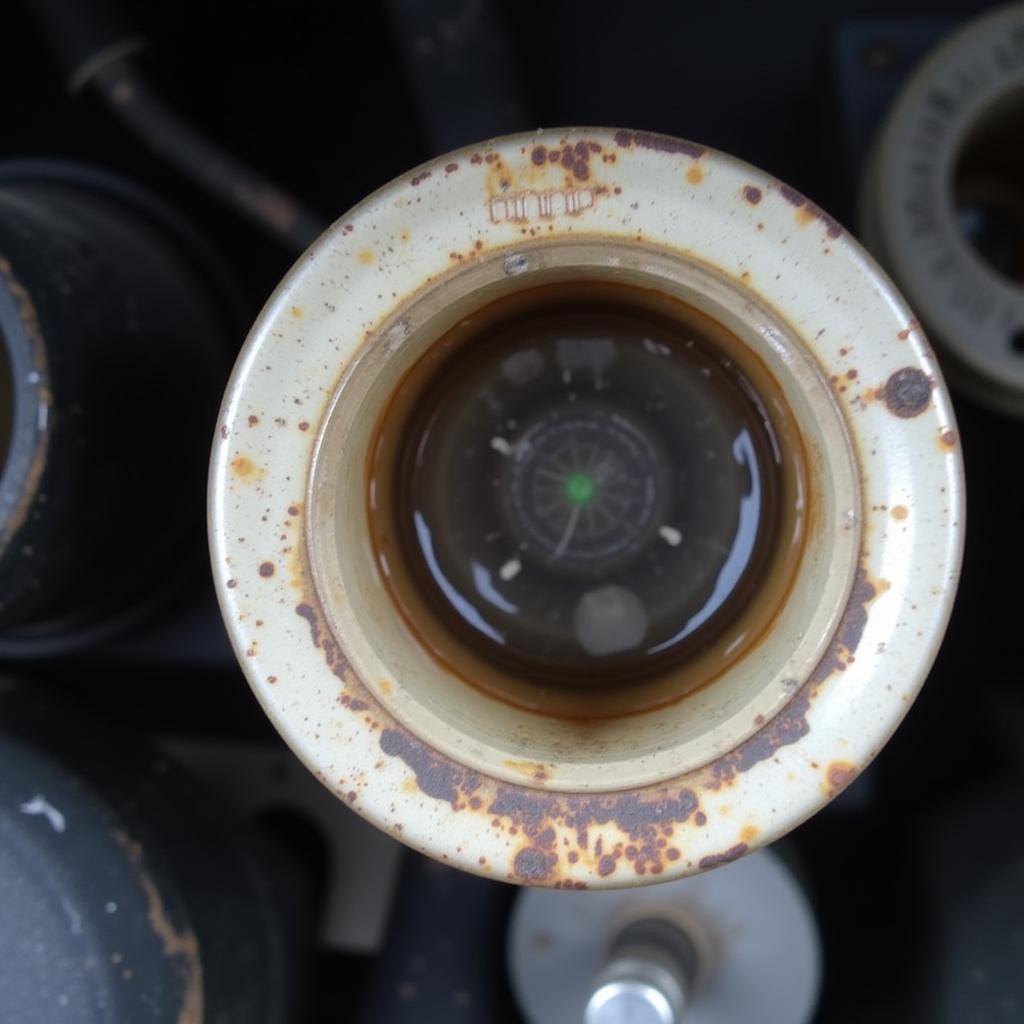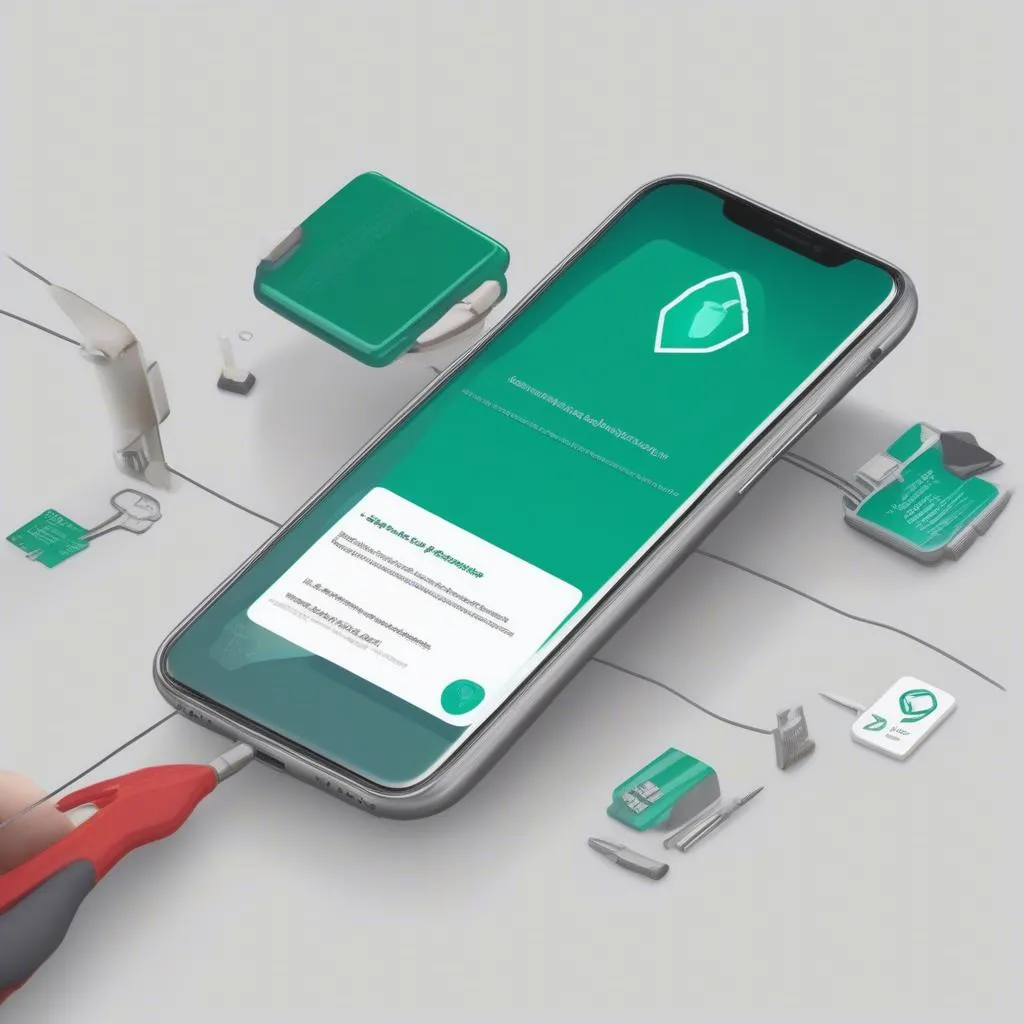The brake warning light on your dashboard is a crucial safety feature in your 2009 Subaru Forester. When it illuminates, it signals a potential issue with your braking system that requires immediate attention. Ignoring this warning light could lead to brake failure and a dangerous situation. This article explores the common causes of a brake warning light on a 2009 Subaru Forester and offers potential solutions, empowering you to address this issue safely and effectively.
Understanding Your Subaru Forester’s Brake System
Before diving into the causes of a lit brake warning light, it’s helpful to have a basic understanding of how your Subaru Forester’s brake system works. This system relies on hydraulic pressure to activate the brakes when you press the pedal. When you depress the brake pedal, brake fluid transmits this force to the calipers, which press the brake pads against the rotors, effectively slowing down or stopping your vehicle.
Several components work together to ensure your braking system’s functionality:
- Brake Fluid: A hydraulic fluid that transmits force from the brake pedal to the wheels.
- Master Cylinder: A component that converts the mechanical force from the brake pedal into hydraulic pressure.
- Brake Lines: Metal tubes carrying brake fluid from the master cylinder to the wheels.
- Brake Calipers: Components at each wheel that house the brake pads and pistons.
- Brake Pads: Friction material that presses against the rotors to slow or stop the vehicle.
- Brake Rotors: Metal discs attached to the wheels that the brake pads grip to create friction.
A problem with any of these components can trigger the brake warning light on your dashboard.
Common Causes of a Brake Warning Light on a 2009 Subaru Forester
Low Brake Fluid Level
One of the most frequent culprits behind a glowing brake warning light is a low brake fluid level. As your brake pads wear down over time, the brake fluid level in the reservoir naturally decreases.
 Low Brake Fluid Reservoir
Low Brake Fluid Reservoir
Expert Insight: “Always check your brake fluid level first when the warning light comes on,” advises Sarah Chen, Senior Automotive Technician at XYZ Auto Repair. “It’s a simple check that could save you a lot of trouble.”
If the fluid level is below the minimum mark, air can enter the brake lines, significantly reducing your braking power and illuminating the warning light.
Worn Brake Pads
Brake pads are designed to wear down over time. When they reach a certain level of wear, a wear indicator, usually a small metal tab, comes into contact with the brake rotor, creating a high-pitched squealing sound. This sound serves as an audible cue that it’s time for a brake pad replacement. In some cases, this wear indicator can also trigger the brake warning light.
Brake Fluid Leak
A leak anywhere in the brake system, be it in the brake lines, hoses, calipers, or wheel cylinders, can lead to a drop in brake fluid pressure and activate the warning light.
Expert Tip: “Inspect your garage floor or driveway for any signs of fluid leaks, particularly a light brown or yellowish fluid, which indicates brake fluid,” suggests Mark Williams, Certified Master Technician. “A leak requires immediate attention from a qualified mechanic.”
Faulty Brake Light Switch
The brake light switch, activated when you depress the brake pedal, plays a dual role: it illuminates your brake lights and signals the car’s computer to engage the brake lights. A malfunctioning brake light switch can disrupt this signaling process and trigger the brake warning light.
Issues with the ABS System
Modern vehicles, including the 2009 Subaru Forester, are equipped with an Anti-lock Braking System (ABS). This system prevents wheel lockup during hard braking, maintaining steering control and stability. A problem within the ABS system, such as a faulty ABS sensor or a malfunctioning ABS control module, can illuminate the brake warning light.
What to Do When Your Brake Warning Light Turns On
If your 2009 Subaru Forester’s brake warning light comes on, it’s crucial to take immediate action:
- Safely pull over to the side of the road.
- Check your brake fluid level. If it’s low, adding brake fluid might temporarily resolve the issue, allowing you to drive to a mechanic.
- Inspect your brake pads visually. Look for signs of excessive wear.
- Listen for any unusual noises when applying the brakes, such as grinding or squealing, which could indicate worn brake pads.
Caution: If you notice a significant drop in brake fluid level, a brake fluid leak, or hear grinding noises when braking, it’s unsafe to continue driving. Contact a qualified mechanic immediately to have your vehicle towed for inspection and repair.
Conclusion
Addressing a brake warning light promptly is vital for your safety and the well-being of your 2009 Subaru Forester. While a low brake fluid level might be a simple fix, other causes, like worn brake pads or leaks, require professional attention. Never ignore this warning light, as a well-maintained brake system is paramount for safe driving. Remember, regular vehicle maintenance, including brake inspections, can prevent many of these issues from arising in the first place.

